Honey, I think it’s time we had a talk. We know you’ve been having all these confusing thoughts and feelings lately, and we understand. It’s perfectly natural to be curious. Who can blame you? This happens to be the time in a comic reader’s life when we start asking ourselves uncomfortable questions. The time…that a new Power Girl series debuts, and you start wondering exactly what her whole deal is. We know you must have heard things from your friends. Maybe you heard she’s a Supergirl clone, or that she carried Hal Jordan’s baby, or that she’s actually from Atlantis. Well, don’t be embarrassed. With Leah Williams and Marguerite Sauvage’s new Power Girl Special kicking off a brand-new ongoing series this week, we’re here for you to set it all straight. This is everything you ever wanted to know about Power Girl, but were afraid to ask.
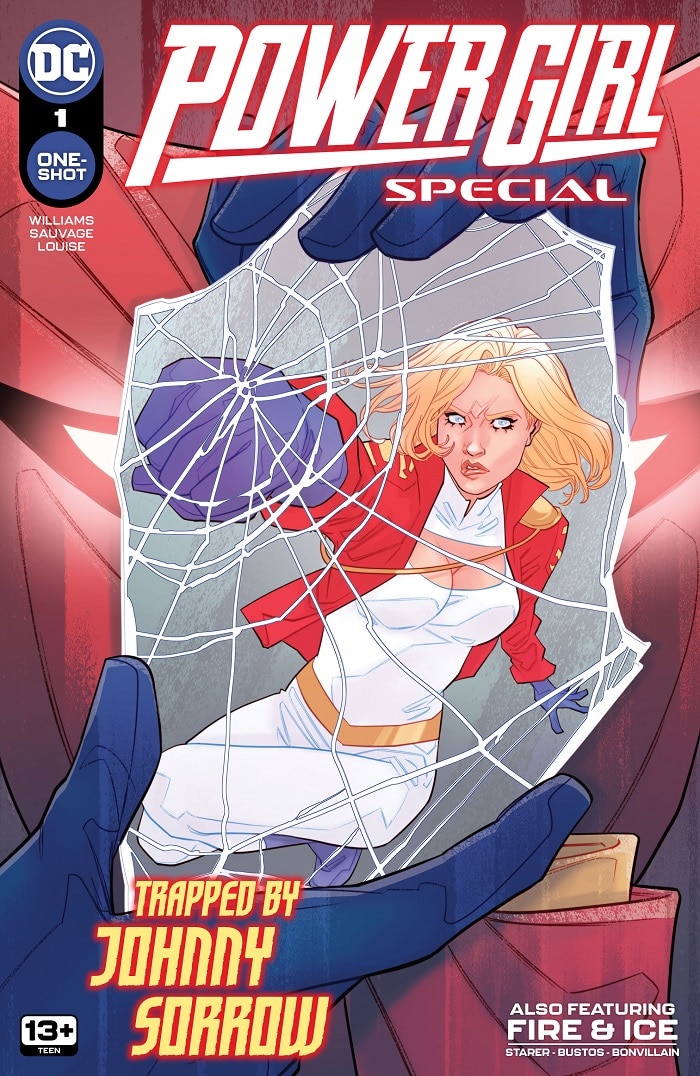
So, what exactly is Power Girl? How is she related to Supergirl?
Well, in a manner of speaking, Power Girl is Supergirl. The same way that, for instance, Superman from All-Star Superman is Superman from Injustice. She’s the same character, but from Earth-Two. The difference is that Power Girl exists as a refugee from another universe in one which already has its own Supergirl.
Whoa, whoa! Earth-Two? Wouldn’t she be from Krypton?
Okay, so when we say “Earth-Two,” we’re really using it to refer to an entire universe. It’s shorthand for the idea that she’s from the Krypton that’s part of the same universe as Earth-Two.
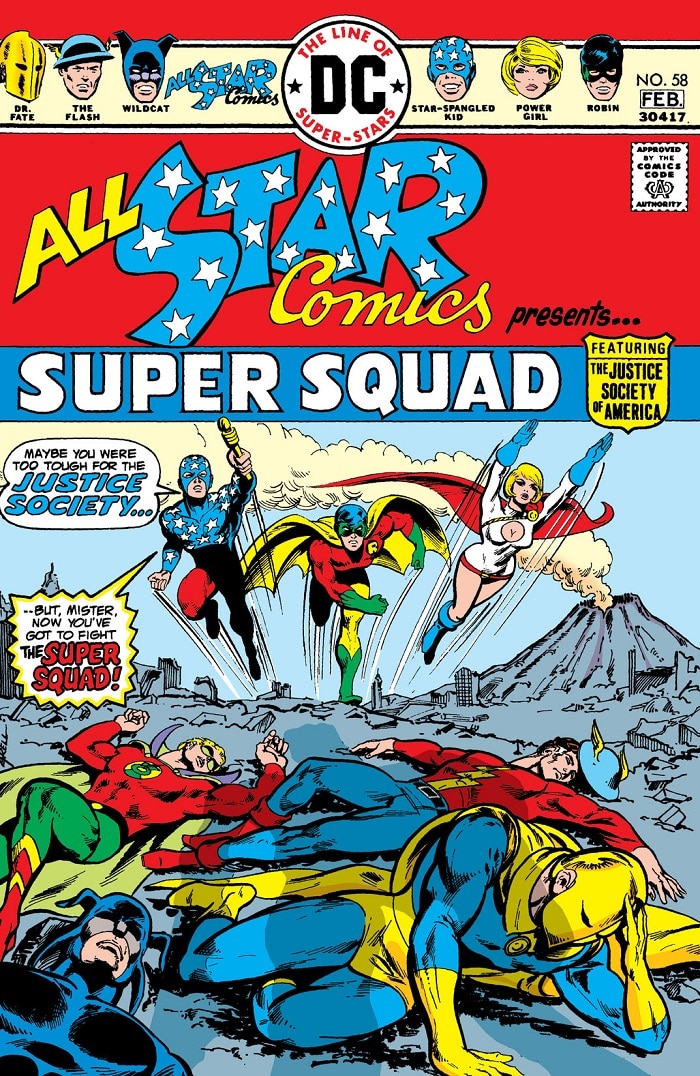
About Earth-Two… I’m kind of confused about it. Sometimes it’s the Golden Age Earth, sometimes it’s got its own comics going on. What’s the story?
Okay, a quick overview of Earth-Two for you. In 1961’s The Flash #123, Barry Allen discovered the existence of an alternate universe superimposed on his own at a different vibrational frequency, where the heroes of the Golden Age he had only read about in comic books were as real as he was. This was where the Justice Society of America were the world’s premiere superheroes, semi-retired from duty with most of the world’s ills good and handled and the Justice League had never formed. Annual crossovers between the heroes of “Earth-One” and “Earth-Two” would see the heroes of each world team up across realities to face a common threat, with the mythology of Earth-Two’s heroes expanding to the point that some comics were launched to explore more of what was happening on that alternate Earth in the modern day.
In 1976’s All-Star Comics #58, we’re introduced to the newest team of heroes from that world, the “Super Squad”—a Titans-like team comprised of a grown-up Dick Grayson, still using the Robin mantle; Sylvester Pemberton, the now-grown Star-Spangled Kid; and a new hero introducing herself as Power Girl, Superman’s long-lost cousin.
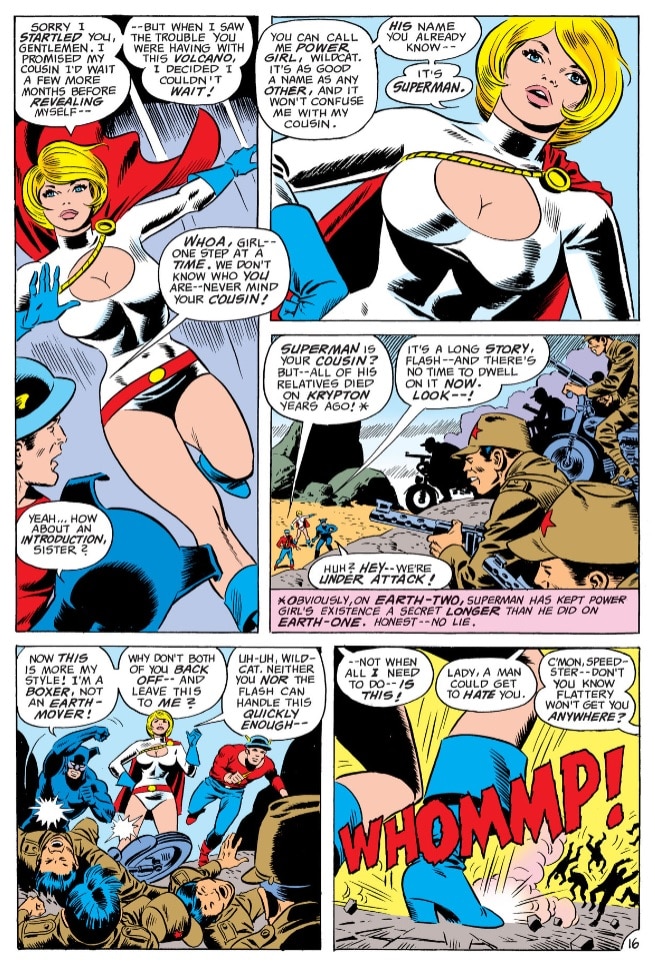
Power Girl’s presence in stories set on Earth-Two continued until Crisis on Infinite Earths, when Earth Two—and, indeed, all other Earths—was apparently destroyed in the final battle against the Anti-Monitor. And yet, Power Girl remained on the reconstituted “New Earth.” With an edict that Superman should be the only true survivor of Krypton in place, Power Girl’s past was temporarily rewritten, until she was reminded of her true origin in 2005’s Infinite Crisis.
2011’s Flashpoint would reorganize the multiverse yet again, introducing a new Power Girl and a new Earth-2 as part of DC’s “New 52.” Most comics featuring Power Girl between 2011 and 2019 are about this Earth-2’s Power Girl, who grew up as that world’s Supergirl before taking on the Power Girl identity after her home was ravaged by Apokolips. This new series is not about her.
This book is about the original Power Girl—the one from the Pre-Crisis Earth-Two, returned into continuity along with so many other heroes by Doctor Manhattan in Doomsday Clock. A Power Girl so far removed from her point of origin, so many worlds and continuities away, that anyone would have a hard time telling who she’s really supposed to be—much less herself. This is a Power Girl who needs to undergo some serious soul searching to find out what she’s really about, which is where we find her today.
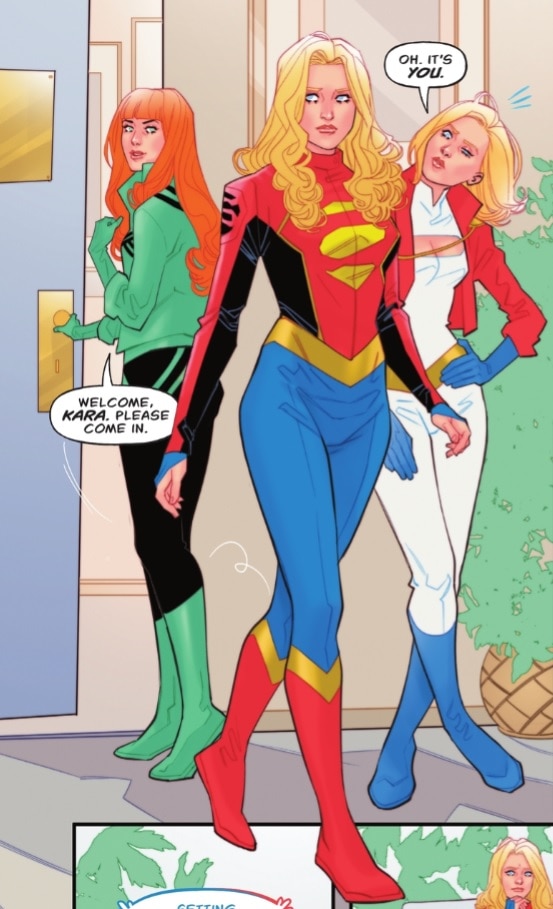
So, the comics have two Supergirls? What’s the difference between them?
Quite a lot! Power Girl, unlike Supergirl, didn’t grow up on Krypton, so she doesn’t have that same connection to her original people. Rather, she was raised in a simulation on her pod to Earth. Unlike Supergirl, Power Girl didn’t spend a lot of time working alongside her Superman either, hence why she doesn’t wear the S emblem. One thing she is very good at is technology, either because she was raised by that simulation, or because, in the original Earth-Two, she was mentored by Wonder Woman, who herself was a scientist on Paradise Island. What really defines Power Girl most is the search for her own identity.
Is that what’s up with her costume window?
It’s been suggested before, yes. Power Girl once said that the reason she keeps a hole in her costume where Superman’s crest should be is because she doesn’t know what she’s supposed to represent. Leah Williams suggests in the new Power Girl comics that it’s practical, to keep her from getting too sweaty in the chest. Personally? I think she just likes how it looks. Why be shy about it?
Hasn’t her backstory changed a lot over the years, though?
Ah, right. The Atlantis thing. As we alluded, after Crisis on Infinite Earths, Power Girl was stuck with the need for a new origin, as Clark was the only Kryptonian allowed in town. But it wasn’t really possible to write her out entirely, as she was a big part of Infinity Inc. at the time of the continuity changeover. So for a while, it was suggested that Power Girl was actually the granddaughter of Arion of Altantis in the ancient past, sent into the future to a time where she would belong among her own kind in an age of heroes. But Infinite Crisis had her discover that was all baloney. Power Girl has only ever truly been from Earth-Two.
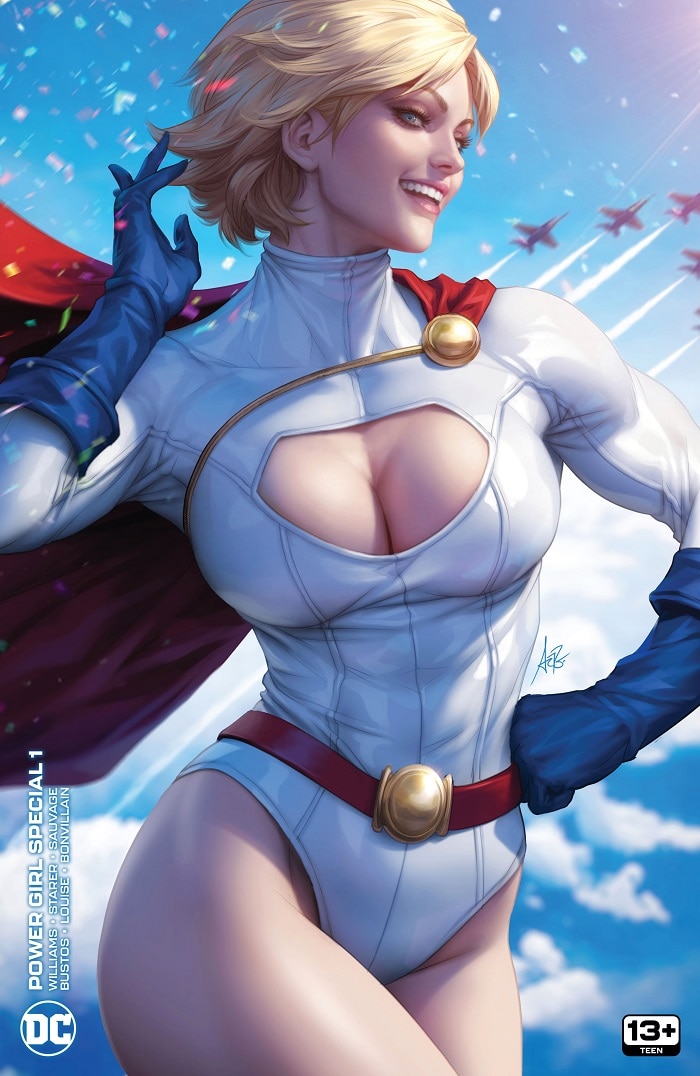
Isn’t it true that in her first appearances, the artist would try to get away with…
Let’s stop you there. That rumor started as a joke that her co-creator Wally Wood told in interviews about something he thought about doing, that some people started taking for granted as truth. Check those original All-Star Comics issues themselves, and you’ll find even the earliest depictions of Power Girl’s proportions to be consistent. People do say the wildest things.
So, she’s not Supergirl. What should I call her?
Power Girl took the name Karen Starr when she came to Earth, but it’s a name she’s grown distant from lately. Her friends typically call her “PG,” or “Peej.” Lately, by Jon Kent’s suggestion, she’s been going by “Paige.”
So, what’s her deal now?
Oh, now? Now she has psychic powers.
Excuse me?
Well, you remember Lazarus Planet, right? The event where magic went crazy all over the DC Universe and a bunch of people’s powers changed? One of those affected was Power Girl, who was psychically tied to Omen, the psychic member of the original Teen Titans. Power Girl and Omen are stuck together figuring out this new status quo in Lazarus Planet: Assault on Krypton and in Action Comics #1051-1053, in stories by the Power Girl Special creative team of Williams and Sauvage. Power Girl and Omen have decided to make the best of their situation by providing therapeutic counseling to fellow superheroes, working to slay their psychological demons as Paige tries to sort out her own.
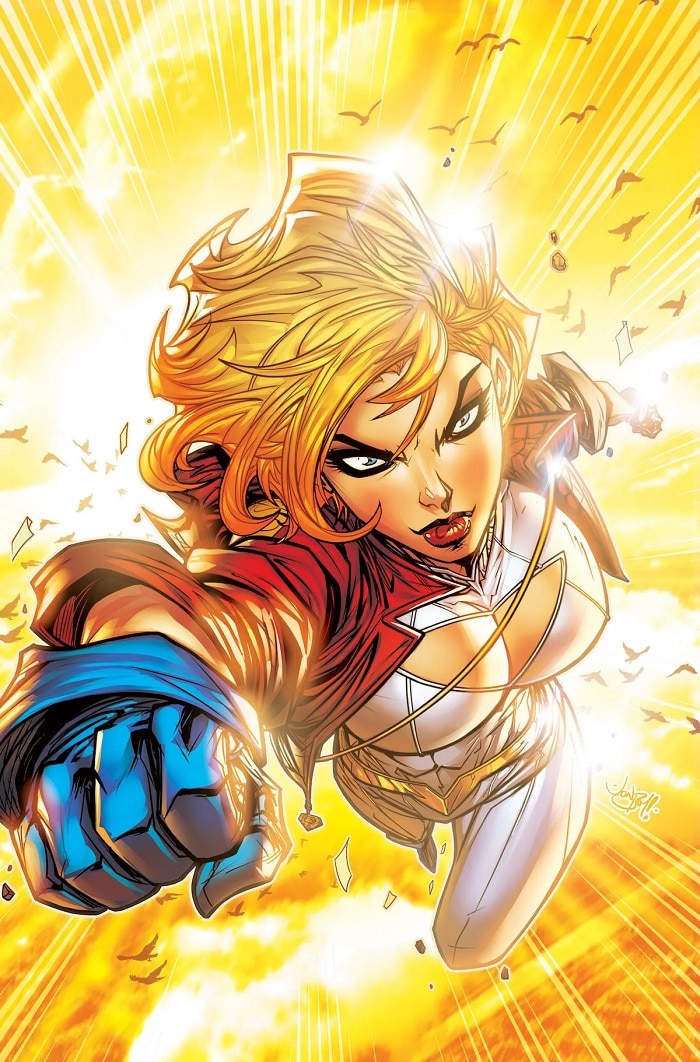
Okay, okay, I’ll get reading. Where do I follow Power Girl from here?
Well, start with the Power Girl Special, which is in stores now. After that, you’ll want to move on to Power Girl’s new ongoing series, which debuts on September 5th!
Can I go now?
Sure, sport. Love you. They grow up so fast…
Power Girl Special #1 by Leah Williams, Marguerite Sauvage and Marissa Louise is now available in print and as a digital comic book.
Alex Jaffe is the author of our monthly "Ask the Question" column and writes about TV, movies, comics and superhero history for DC.com. Follow him on Twitter at @AlexJaffe and find him in the DC Community as HubCityQuestion.




















